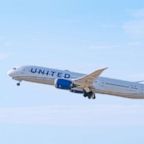HARTFORD, Conn. -- A business jet may have experienced problems with its stability before severe roughness caused the death of a passenger, the National Transportation Safety Board said Monday.
The NTSB said it's looking at a “reported trim issue," a reference to adjustments that are made to an airplane’s control surfaces to ensure it is stable and level in flight. The agency initially reported that the plane experienced severe turbulence late Friday afternoon.
Last year, the Federal Aviation Administration instructed pilots flying the same model of Bombardier aircraft to take extra pre-flight measures after trim problems had been reported.
Investigators will have more information after they've analyzed the flight data recorder, cockpit voice recorder and other information, such as weather at the time, the NTSB said.
The Bombardier executive jet was traveling from Keene, New Hampshire, to Leesburg, Virginia, before diverting to Bradley International Airport in Connecticut.Three passengers and two crew members were aboard.
The person who died, identified as 55-year-old Dana Hyde of Cabin John, Maryland, was brought to a hospital in Hartford, Connecticut, where she was later pronounced dead, Connecticut State Police said Monday.
The jet’s owner, Conexon, based in Kansas City, Missouri, confirmed in an email that Hyde was the wife of a company partner, Jonathan Chambers, who was also on the plane with his son. Neither father nor son were hurt, the company said.
Dana Hyde served as counsel for the 9/11 Commission, formally known as the National Commission on Terrorist Attacks Upon the United States, and other posts during a career in Washington, D.C., according to her LinkedIn page.
Turbulence is unstable air in the atmosphere, which continues to be a cause for injury for airline passengers despite safety improvements. But deaths from turbulence are extremely rare. There were 30 injures, but no deaths, from 2009 to 2020, the FAA said in December.
Trim problems can also be responsible for buffeting or altitude changes.
The NTSB is looking at all of those factors and plans to issue a preliminary report in two to three weeks, said spokesperson Sarah Sulick.
The FAA issued its air directive last year after multiple instances in which the horizontal stabilizer on the Bombardier BD-100-1A10 caused the nose of the plane to turn down after the pilot tried to make the aircraft climb.
The directive, which applied to an estimated 678 aircraft registered in the U.S., called for expanded pre-flight checks of pitch trim and revised cockpit procedures for pilots to be used under certain circumstances.
The Bombardier BD-100-1A10 is more commonly known as the Challenger 300 and Challenger 350.
___
Sharp reported from Portland, Maine.




